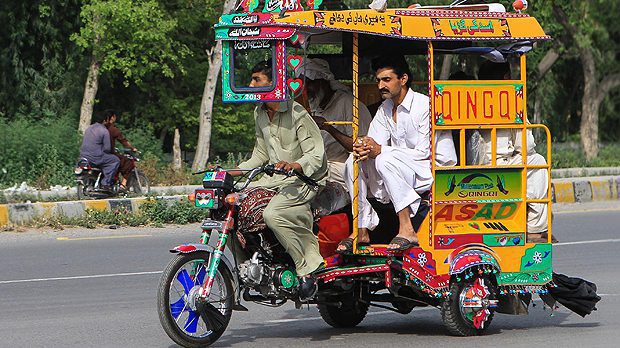Introduction:
Karachi, the economic heartbeat of Pakistan, stands at a crossroads of transformation. Its urban fabric, characterized by rapid population growth and sprawling development, is undergoing a significant shift propelled by ambitious public transport projects. In this comprehensive exploration, we dissect the profound influence of these initiatives on Karachi’s real estate landscape, elucidating how they are reshaping property values, development patterns, and investment dynamics.
Karachi’s Real Estate Dynamics:
As the largest city in Pakistan and a major economic hub, Karachi boasts a vibrant and dynamic real estate market. With its strategic location as a vital port city and commercial center, Karachi has long been a magnet for investors, both domestic and international. The city’s real estate sector has thrived amidst rapid urbanization, fueled by a growing population and robust economic activity.
The Emergence of Public Transport Projects:
In recent years, Karachi has witnessed a surge in public transport projects aimed at alleviating its notorious traffic congestion and improving mobility for its residents. These initiatives, ranging from the Karachi Metrobus System to the Green Line Bus Rapid Transit (BRT) project and the revival of the Karachi Circular Railway (KCR), represent a concerted effort by authorities to address the city’s transportation challenges.
Impact on Property Values:
One of the most palpable effects of these public transport projects is their impact on property values. Studies have consistently shown that properties located in proximity to well-planned transit routes and transportation hubs experience higher appreciation rates. Areas along the proposed routes of BRT and metro systems have witnessed a surge in demand, leading to an upward trajectory in property prices.
Transit-Oriented Development (TOD):
Transit-oriented development has emerged as a guiding principle in Karachi’s urban planning paradigm, advocating for mixed-use, high-density developments centered around transit nodes. TOD not only enhances accessibility but also fosters vibrant, pedestrian-friendly communities with enhanced amenities and services. Developers are increasingly embracing TOD principles to cater to the evolving needs and preferences of urban dwellers.
Enhanced Connectivity and Accessibility:
The improved connectivity offered by public transport projects has profound implications for Karachi’s real estate market. Enhanced accessibility to various parts of the city opens up new frontiers for real estate development, unlocking the potential of previously overlooked neighborhoods. Areas that were once considered peripheral or inaccessible become prime targets for investment and development, driving urban expansion and revitalization efforts.
Unlocking Investment Opportunities:
The implementation of public transport projects creates a plethora of investment opportunities within Karachi’s real estate sector. Astute investors recognize the potential for capital appreciation in areas poised for transit-oriented development or situated along planned transport corridors. Moreover, commercial properties located in close proximity to transit hubs experience heightened demand from businesses seeking strategic locations with seamless connectivity.
Navigating Challenges, Seizing Opportunities:
While public transport projects offer immense promise for Karachi’s real estate sector, they also pose a myriad of challenges. Land acquisition, infrastructure development, and urban planning complexities represent formidable hurdles that must be addressed. However, with proactive measures by government authorities and collaboration with private stakeholders, these challenges can be surmounted, paving the way for sustainable urban growth and development.
Conclusion:
In conclusion, public transport projects wield a transformative influence on Karachi’s real estate landscape, catalyzing demand, investment, and development across the city. By enhancing connectivity, fostering accessibility, and promoting transit-oriented development, these initiatives lay the groundwork for a more inclusive, sustainable urban future. As Karachi continues its evolution into a global megacity, the integration of transportation and real estate planning will be paramount in harnessing its full potential as a thriving economic and cultural hub.
FAQ’s:
1. How do public transport projects impact Karachi’s real estate?
Public transport projects enhance connectivity and accessibility, leading to increased property values and investment opportunities in Karachi’s real estate market.
2. What are some examples of public transport projects in Karachi?
Examples include the Karachi Metrobus System, the Green Line Bus Rapid Transit (BRT) project, and the revival of the Karachi Circular Railway (KCR).
3. What is transit-oriented development (TOD) and how does it relate to Karachi’s real estate?
Transit-oriented development promotes mixed-use, high-density developments around transit nodes, fostering vibrant communities and increasing property demand in Karachi.
4. How do public transport projects affect property values along their routes?
Properties located near planned transit routes or transportation hubs experience higher appreciation rates due to increased demand and accessibility.
5. What investment opportunities do public transport projects create in Karachi?
Public transport projects create opportunities for investment in areas poised for transit-oriented development and commercial properties near transit hubs.
6. What challenges do public transport projects face in Karachi?
Challenges include land acquisition, infrastructure development, and urban planning complexities, which require proactive measures and collaboration to overcome.
7. How can public transport projects contribute to sustainable urban growth?
By promoting transit-oriented development and reducing reliance on private vehicles, public transport projects can contribute to a more sustainable and livable urban environment in Karachi.
8. Which areas in Karachi are experiencing increased property demand due to public transport projects?
Areas along the routes of BRT and metro systems are witnessing heightened property demand, leading to appreciation in property values.
9. How are developers incorporating TOD principles into their projects in Karachi?
Developers are integrating mixed-use developments, pedestrian-friendly amenities, and efficient transportation systems into their projects to align with TOD principles and cater to market preferences.
10. What is the future outlook for Karachi’s real estate market in light of ongoing public transport projects?
The future outlook is optimistic, with continued investment and development opportunities expected as public transport projects improve connectivity and reshape urban dynamics in Karachi.





